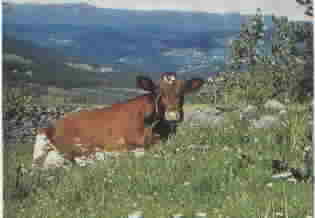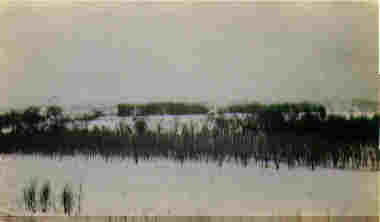 |
 |
Lag History Kontaktforum Resources |
Geography of Hadeland
|
|
The area called Hadeland occupies approximately 500 square miles from the suburbs of the Norwegian capital of Oslo and the hills of Nordmarka in the south to the Synnfjellet foothills of the Jotunheimen mountain range in the north. Lake Mjosa lies to the east. Hadeland surrounds the southern end of the Randsfjorden.
Most of the traditional northern parish of Brandbu has been absorbed into today's administrative district of Gran, which with Jevnaker and Lunner comprise the political boundaries of Hadeland today.
Jevnaker encompasses the western side of Randsfjord, known as the 'Fjorda' district, which provides wonderful swimming, boating, and fishing opportunities during the long days of the Norwegian summer.
About forty-five percent of the people in Lunner commute to Oslo to work.
Gran's rolling countryside is home to about two-thirds of the 30,000 people living in Hadeland. The municipality of Gran serves as the area's main center of commerce.
Hadeland includes large woodlands. Sixty-nine percent of Lunner is covered by forests. Close to half of the forest area in Lunner and Jevnaker is common land. The local forestry cooperative plays a key role in the economies of these two districts. The forests are home to a variety of wild berries and host a number of species of birds, roe-deer, moose and other wildlife. Populations of trout, char and other freshwater fish have dwindled in the lakes and streams, but restocking efforts are underway.
The land around the Randesfjord is the most fertile in Norway. Hadeland accounts for just 5 percent of the country's area, but it represents thirteen percent of its agricultural land. Farmers harvest grains, alfalfa and potatoes and raise pigs and dairy cattle. There are even some race horse breeding farms!
The foothills in the northernmost part of Hadeland offer breath-taking scenery and a winter wonderland of ski jumps and both cross-country and alpine skiing venues.
From the metropolitan south to the panoramic views of the north, in every season, Hadeland offers something for everyone! |

|
|
|
|

Hadeland in Winter - Early 1900's
Photo by Ole Ringen, courtesy Tina Ringen
![]()
|
Copyright ©
2002-2021 Last update: February 08, 2021 |